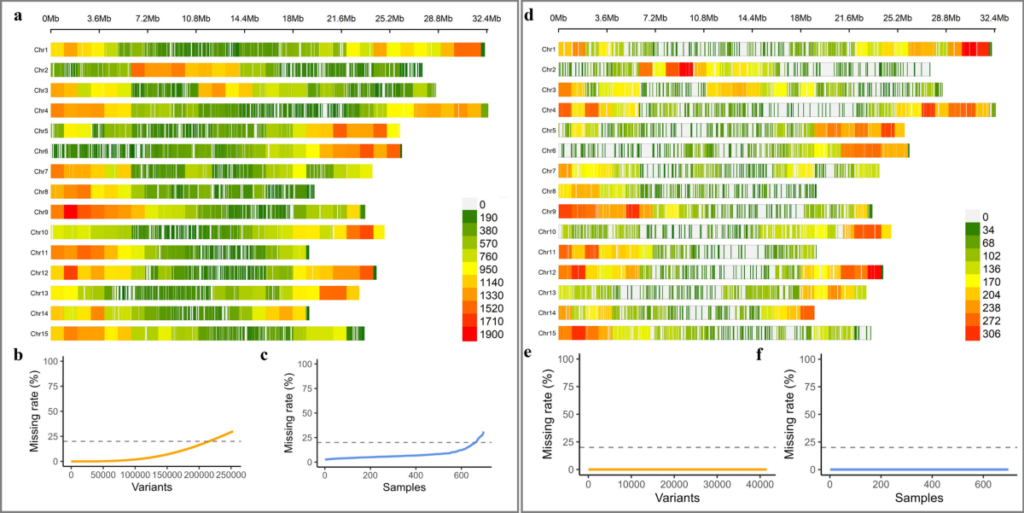Global sweetpotato production is increasing due to its health benefits, including high levels of complex carbohydrates and bioactive compounds. To explore the genetic basis of carbohydrates and carotenoids, we conducted a genome-wide association study (GWAS) using diverse sweetpotato accessions, two decades of phenotypic data, and 252,975 dosage-based SNPs and INDELs. Our findings confirmed a negative correlation between dry matter and β-carotene and identified interconnected metabolic pathways regulating multiple traits. Notably, phytoene synthase, involved in carotene biosynthesis, was associated with dry matter. Other pathways linked to these traits include carbohydrate metabolism, cell wall modification, phosphate starvation, stress response, and flowering regulation. To evaluate the breeding potential of GWAS-assisted genomic prediction (GWABLUP), we found that the 500 top GWAS hits used for genomic prediction significantly enhanced predictive ability (PA) for six out of nine traits, improving PA by up to 6.7% to 15.9% compared to the Genomic Best Linear Unbiased Prediction (GBLUP), which utilized 41,551 and 500 markers, respectively. The best PA across traits ranged from 20.9% to 60.6%, with both additive and dominance effects playing an important role. Model selection, guided by resample model inclusion probability (RMIP), during GWABLUP and after each GWAS iteration typically yielded the highest PA. These results provide valuable insights for breeding strategies aimed at optimizing agronomic traits and addressing market demands for diverse value-added products.
Genome-wide associations of sweetpotato metabolites enhance genomic prediction and identify genes in metabolic and regulatory pathways



